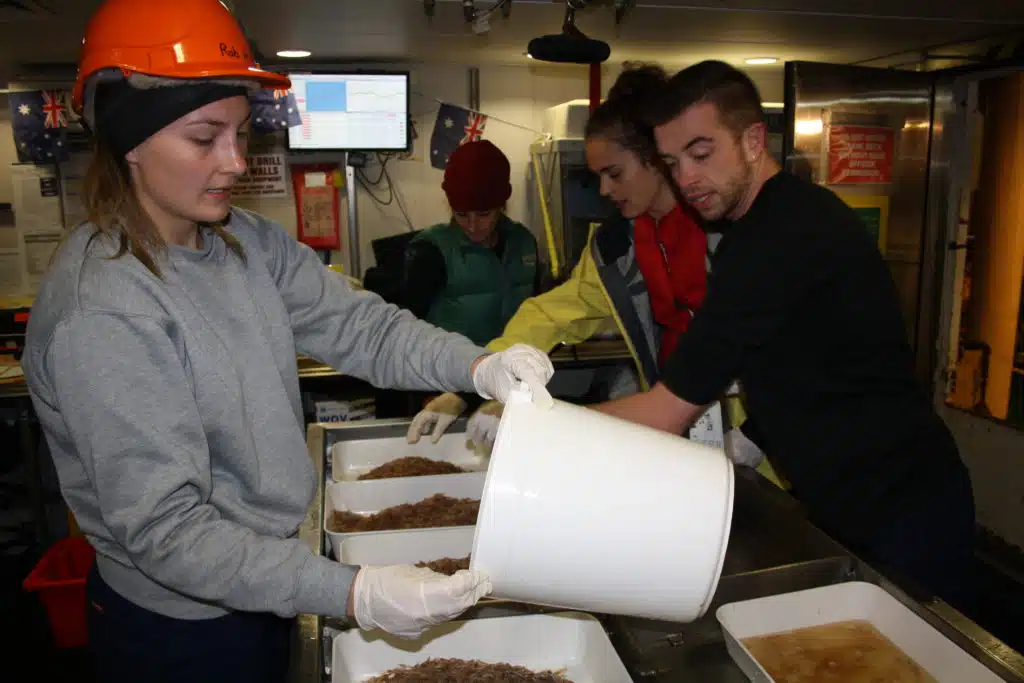A changing, less nutritious menu for Southern Ocean marine life could reduce the seafood appearing on the dinner plates of people around the world, according to Tasmanian scientists.
Blooms of a gelatinous plankton, known as salp, have been identified in waters south of 60°S, in the Indian Sector of the Southern Ocean, by researcher Paige Kelly.
“In the Southern Ocean, waters south of 60°S are typically full of Antarctic krill, which are a crucial food source for mammals and fish,” says Paige, a PhD student at the Institute for Marine and Antarctic Studies and Antarctic Climate and Ecosystems Cooperative Research Centre.
“The presence of salps so far south means that these mammals and fish might have to eat salps instead of krill. And this could have serious consequences for the ecosystem.”

Paige on board the Aurora Australis in 2016.
Credit: Dani Mitchell
The consumption of these East Antarctic salps—which contain less than one third of the calories and protein of krill—could change the weight, reproduction and behaviour of commercially fished species that prefer to feed on krill.
“Such changes in commercially fished species could not only reduce economic input, but also limit a protein source that is under increasing demand,” Paige says.
Paige recently presented her research at a series of international conferences, discussing her findings with those from the commercial fishing industry.
Paige is now preparing the research for publication.
Banner image: Many hands make light work in the wet lab on board the Aurora Australis. From left to right: Jessica Melvin, Andrea Walters, Paige Kelly and Jake Wallis. Credit: Dani Mitchell





 Fresh Science is on hold for 2022. We will be back in 2023.
Fresh Science is on hold for 2022. We will be back in 2023.